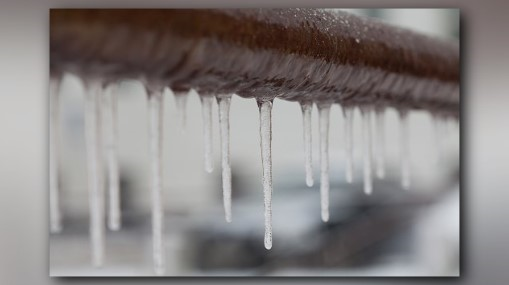We've found this article about Preventing and dealing with frozen pipes down the page on the internet and accepted it made perfect sense to talk about it with you over here.

Cold weather can wreak havoc on your plumbing, particularly by freezing pipes. Right here's just how to stop it from happening and what to do if it does.
Intro
As temperatures decrease, the threat of frozen pipelines rises, potentially resulting in pricey repair work and water damage. Comprehending how to stop frozen pipelines is essential for homeowners in cold environments.
Avoidance Tips
Shielding vulnerable pipes
Wrap pipelines in insulation sleeves or make use of warmth tape to shield them from freezing temperature levels. Concentrate on pipes in unheated or exterior locations of the home.
Heating methods
Maintain indoor spaces appropriately heated up, specifically locations with pipes. Open cupboard doors to allow cozy air to flow around pipes under sinks.
Exactly how to identify icy pipes
Look for lowered water circulation from taps, uncommon smells or noises from pipelines, and visible frost on revealed pipelines.
Long-Term Solutions
Structural changes
Think about rerouting pipelines away from exterior walls or unheated locations. Add added insulation to attic rooms, cellars, and crawl spaces.
Upgrading insulation
Purchase top quality insulation for pipes, attic rooms, and wall surfaces. Correct insulation helps preserve constant temperature levels and reduces the threat of icy pipelines.
Securing Outside Plumbing
Garden tubes and exterior taps
Disconnect and drain pipes garden hoses before winter. Mount frost-proof spigots or cover outside taps with insulated caps.
Understanding Icy Pipelines
What causes pipelines to freeze?
Pipelines ice up when exposed to temperatures below 32 ° F (0 ° C) for expanded durations. As water inside the pipes freezes, it expands, taxing the pipeline wall surfaces and possibly causing them to rupture.
Dangers and problems
Icy pipelines can lead to water disruptions, home damages, and costly repair services. Ruptured pipelines can flooding homes and create considerable structural damages.
Indications of Frozen Piping
Identifying icy pipes early can stop them from bursting.
What to Do If Your Pipelines Freeze
Immediate actions to take
If you presume frozen pipes, keep faucets available to relieve stress as the ice thaws. Utilize a hairdryer or towels taken in hot water to thaw pipelines slowly.
Verdict
Stopping icy pipes calls for proactive procedures and fast reactions. By recognizing the causes, indications, and safety nets, property owners can protect their plumbing throughout cold weather.
5 Ways to Prevent Frozen Pipes
Drain Outdoor Faucets and Disconnect Hoses
First, close the shut-off valve that controls the flow of water in the pipe to your outdoor faucet. Then, head outside to disconnect and drain your hose and open the outdoor faucet to allow the water to completely drain out of the line. Turn off the faucet when done. Finally, head back to the shut-off valve and drain the remaining water inside the pipe into a bucket or container. Additionally, if you have a home irrigation system, you should consider hiring an expert to clear the system of water each year.
Insulate Pipes
One of the best and most cost-effective methods for preventing frozen water pipes is to wrap your pipes with insulation. This is especially important for areas in your home that aren’t exposed to heat, such as an attic. We suggest using foam sleeves, which can typically be found at your local hardware store.
Keep Heat Running at 65
Your pipes are located inside your walls, and the temperature there is much colder than the rest of the house. To prevent your pipes from freezing, The Insurance Information Institute suggests that you keep your home heated to at least 65 degrees, even when traveling. You may want to invest in smart devices that can keep an eye on the temperature in your home while you’re away.
Leave Water Dripping
Moving water — even a small trickle — can prevent ice from forming inside your pipes. When freezing temps are imminent, start a drip of water from all faucets that serve exposed pipes. Leaving a few faucets running will also help relieve pressure inside the pipes and help prevent a rupture if the water inside freezes.
Open Cupboard Doors
Warm your kitchen and bathroom pipes by opening cupboards and vanities. You should also leave your interior doors ajar to help warm air circulate evenly throughout your home.

I am just very fascinated by How To Avoid Freezing Pipes and I'm hoping you enjoyed reading our blog entry. I beg you set aside a second to share this blog entry if you enjoyed reading it. I am grateful for being here. Return soon.
Click Here